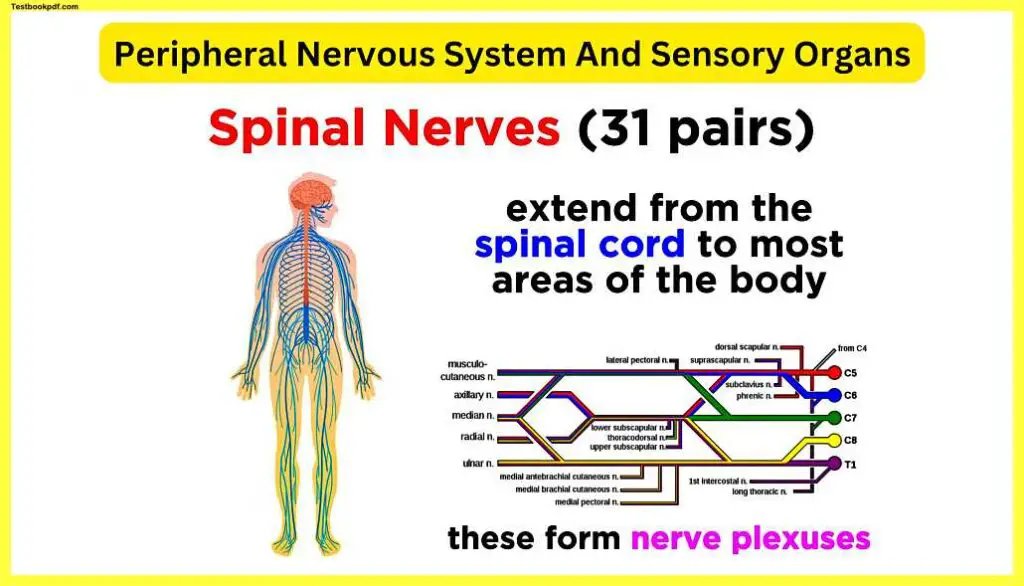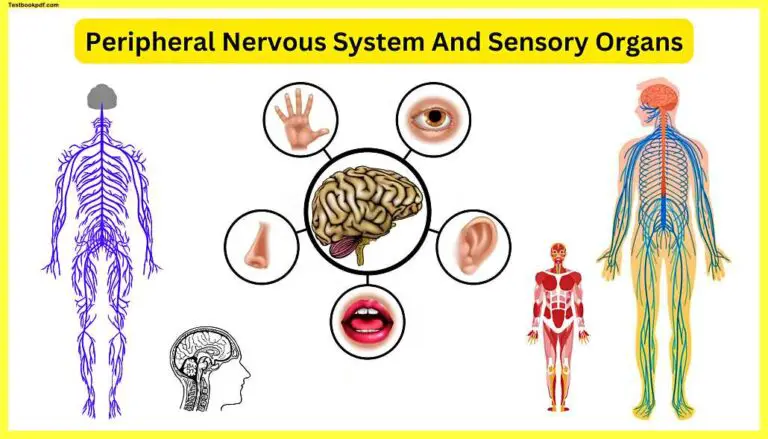Peripheral Nervous System And Sensory Organs
Today we will discuss the Peripheral Nervous System And Sensory Organs, This is the part that receives information from your surroundings and brings it to the brain, and when the brain decides what to do, it sends signals around your body to tell it what to do. This is just as complicated as it sounds, so let’s check out all the sensory organs that are involved in making this happens, as well as the nerves that transmit the information.
Central Nervous System
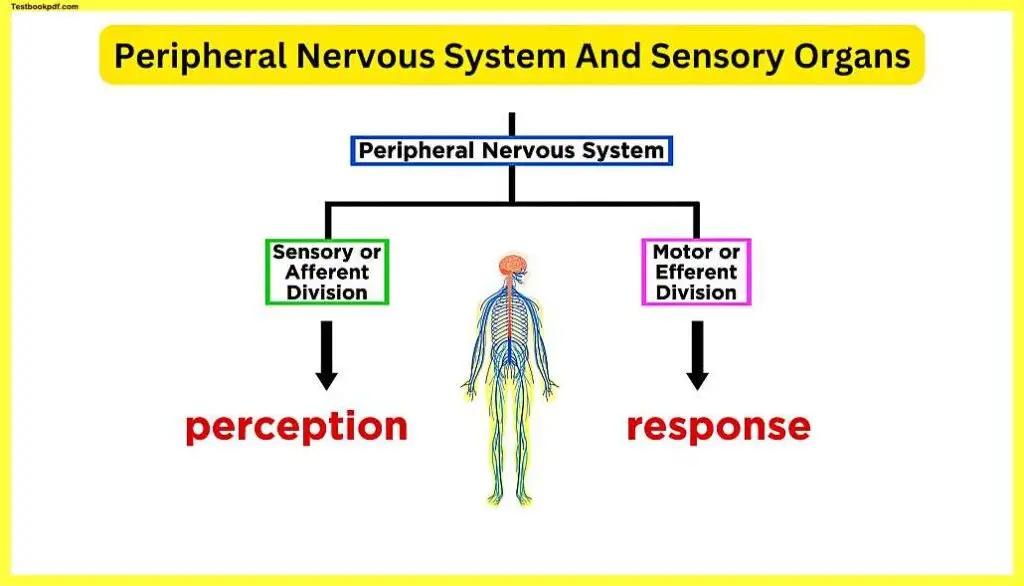
The nervous system is divided into two main divisions, the central nervous system, which consists of the brain and spinal cord, as we just described in the previous clip, and the peripheral nervous system. This is the rest of it, the part that receives information from the world outside our bodies, the information that the brain needs to be able to tell the body what to do, so the peripheral nervous system is the interface between a human being and its surroundings. It consists of tiny white nerves that thread through every single part of the body, and this includes all neural structures apart from the brain and spinal cord. Let’s learn a bit more about how this system is organized.
Peripheral Nervous System
The peripheral nervous system is divided into a sensory, or afferent division, and a motor, or efferent division. The first of these is what gives us the ability to sense and perceive our surroundings, and the second is what gives us the ability to physically respond to them. Let’s talk about the sensory system first, since that’s the entry point for any stimulus. A major component of this is called the somatosensory system, which is comprised of all the receptors along the exterior of your body.
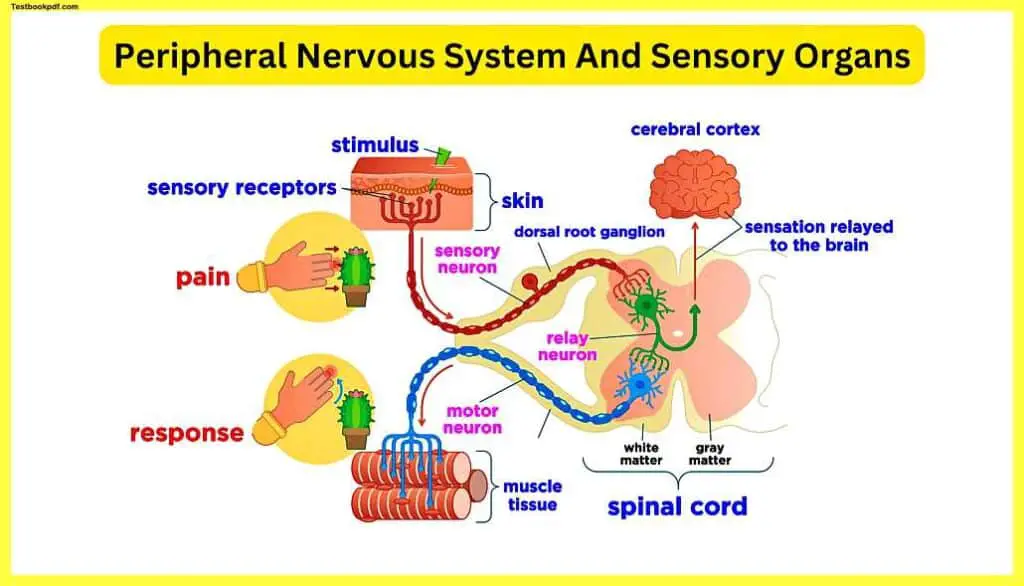
If something touches you, on your leg, arm, or the back of your head, you have this system to thank for being able to feel it. Some processing occurs even before the signal reaches the brain, and information about the stimulus is encoded in the resulting nerve impulses. These impulses are integrated at the circuit level so as to send them to the correct area of the cerebral cortex so that the stimulus can be perceived properly. It is here where the information is interpreted, its magnitude is estimated, and its quality is assessed. Sometimes the perception of a stimulus is pain, and although unpleasant, this is a valuable biological response that causes us to protect ourselves from something that is actively damaging us, like a flame, or a sharp object, by moving away from it.
Types of Sensory Receptors
There are a wide variety of sensory receptors that have the ability to respond to stimuli. We can categorize these by the type of stimulus they detect, their location on the body, and their structure.
Receptors By Type of Stimulus
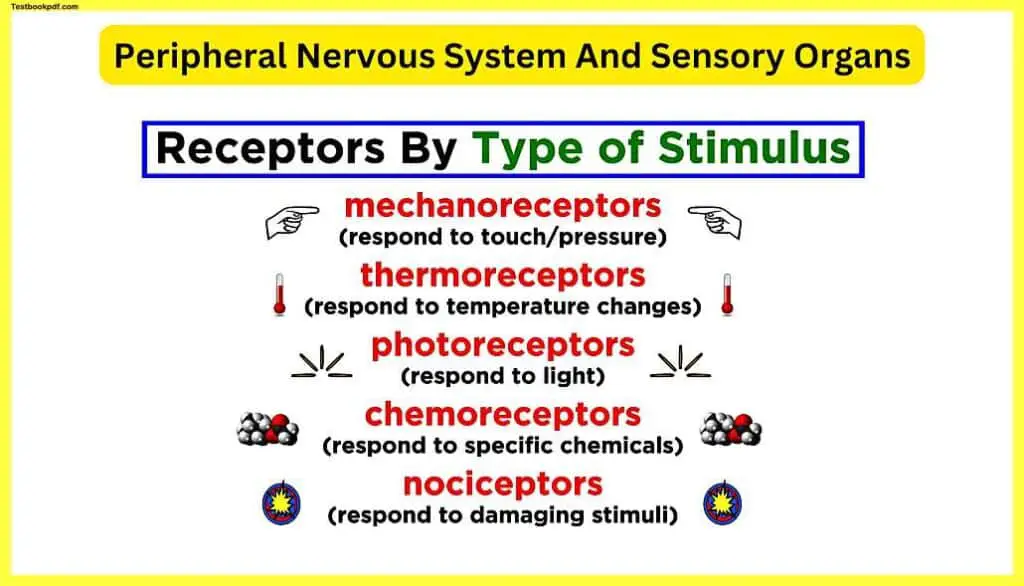
Going by the first method, we can identify mechanoreceptors, which respond to touch or pressure, thermoreceptors, which respond to temperature change, photoreceptors, which respond to light, and chemoreceptors, which respond to specific chemicals. There are also nociceptors, which respond to stimuli that can damage the body, and in turn stimulate other receptors of the varieties we mentioned to elicit a response.
Receptors By Location
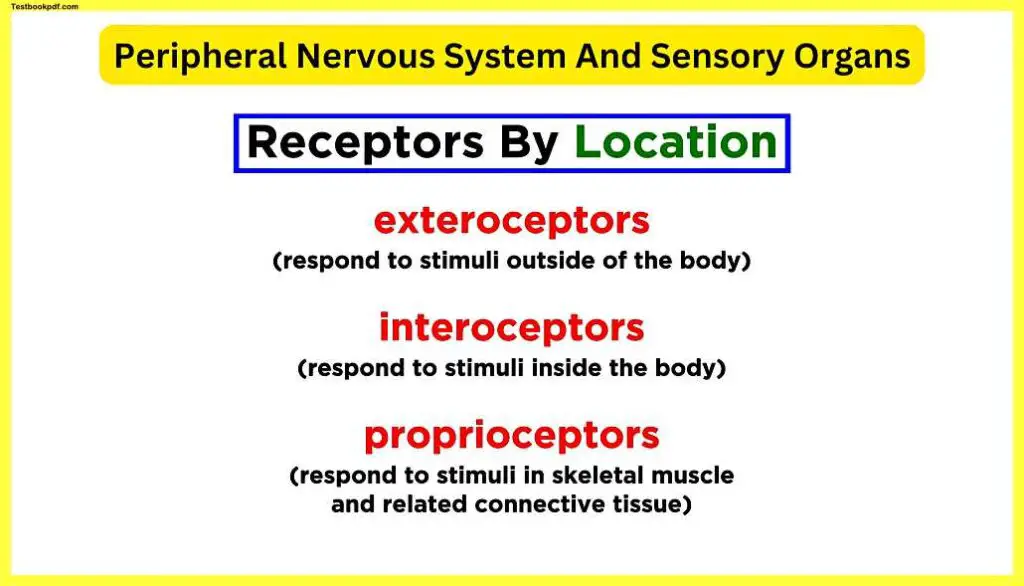
If going by location, exteroceptors respond to stimuli outside of the body, interoceptors respond to stimuli inside the body, and proprioceptors respond to stimuli inside the body as well, although specifically in skeletal muscles and related connective tissue.
Receptors By Structure
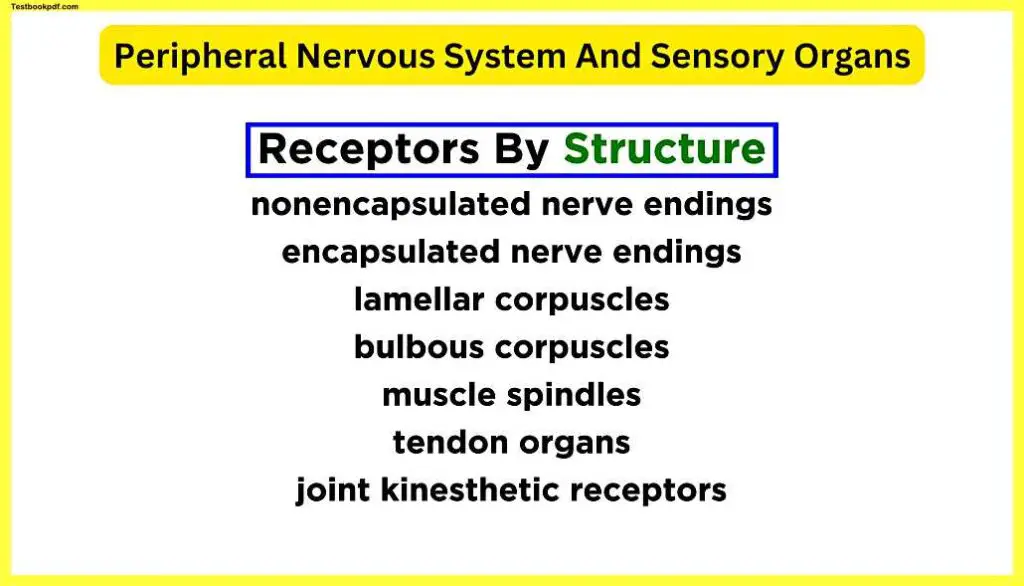
Lastly, if considering structure, there are many, including nonencapsulated or encapsulated nerve endings, lamellar and bulbous corpuscles, muscle spindles, tendon organs, and joint kinesthetic receptors. These are each best suited for monitoring their own particular type of stimulus.
The Senses
Of course, most of our sensory perception comes from the senses, each of which requires a complex organ to receive and transmit data. These include the eyes for vision, a nose for smelling, a tongue for tasting, and ears for hearing. Beyond this, there is the sense of touch that is not as localized and can be divided into different modalities associated with pain, temperature, vibration, and other phenomena. But looking at the other senses and their respective organs, each of these structures could be discussed for several hours, so we will offer just a brief description here, and expand upon them later.
Structure of the Eye
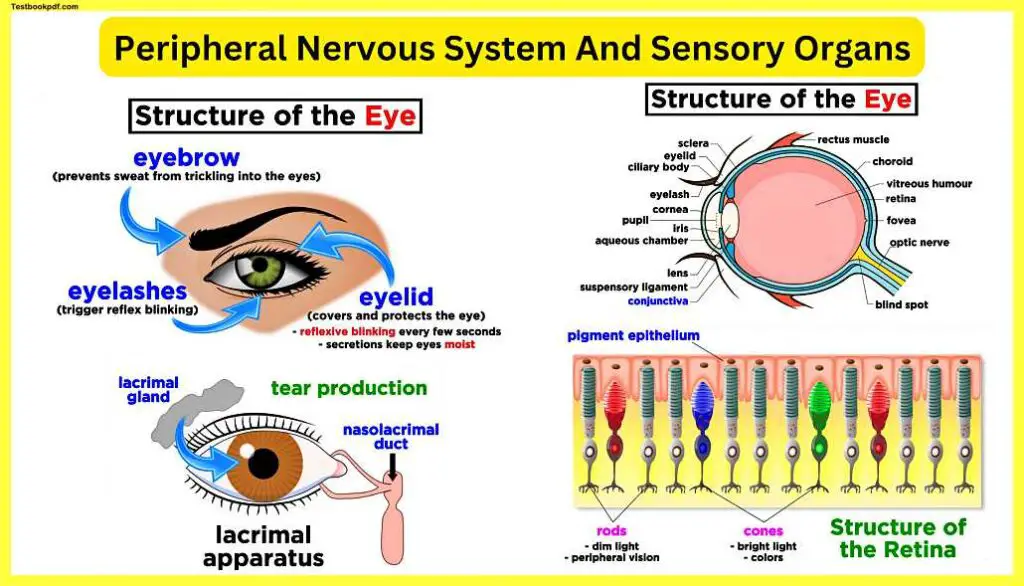
First, the eyes. These come with accessory structures, those being the eyebrows, which prevent sweat from trickling into the eyes, and eyelids, which cover and protect the eyes. They are activated reflexively to blink every few seconds, which spreads secretions across the eyes to keep them moist. Eyelashes project from the eyelids, which are full of nerve endings, and if anything touches them, reflex blinking will occur. Lining the eyelids and folding back across part of the eyeball is a mucous membrane called the conjunctiva.
There is also a lacrimal apparatus, comprised of a gland that produces a secretion that we call tears, and ducts that drain into the nasal cavity. Tears are meant to clean the eye and destroy pathogens that enter the area. Six muscles control the motion of the eye, while the eyeball itself is a hollow sphere filled with a clear fluid called the vitreous humor.
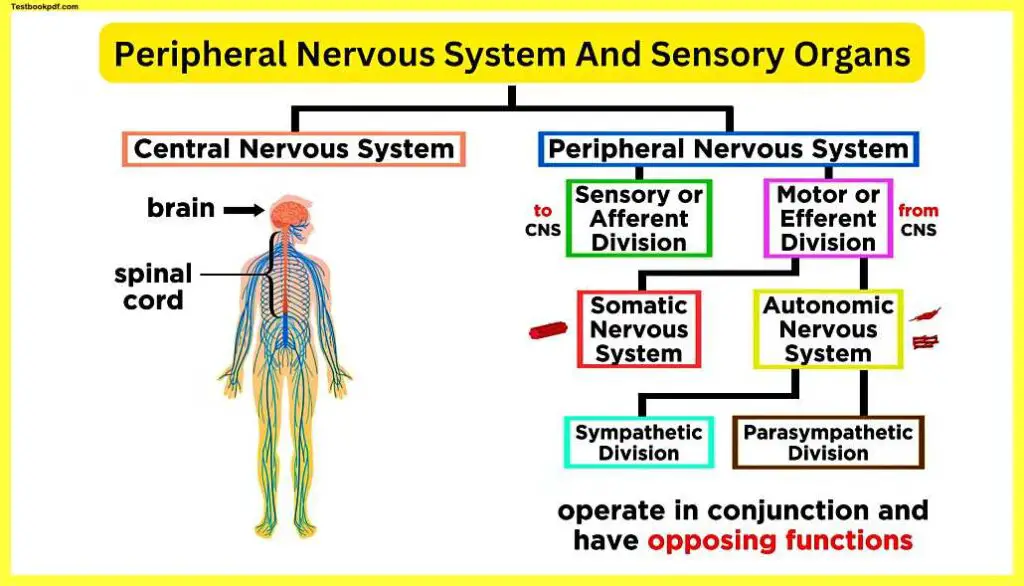
The eye has an outer fibrous layer, made of sclera and a cornea. Next is a vascular layer comprised of the choroid, ciliary body, and iris. The iris is the colored part of the eye, with its central pupil, which is where light enters. The inner portion of the eye is the retina, and this is where the photoreceptors sit, which convert photons into information for the brain, thus allowing us to see our surroundings.
The retina has an outer pigmented layer and an inner neural layer. The photoreceptors are of two types, rods and cones. The sensitive rods are for dim light and peripheral vision, while the cones are for bright light and colors. The lens is the biconvex, transparent structure that can focus light onto the retina, and it is comprised of the lens epithelium and lens fibers. The actual mechanisms of refraction and phototransduction are very complex and will not be discussed at this time, so let’s move on to the nose.
Structure of the Nose

The nose is full of chemoreceptors. If a substance is volatile, meaning easily evaporated at room temperature, some of it can interact with these receptors, allowing us to decide whether that substance is to be avoided. The structure responsible for this is called the olfactory epithelium, up in the roof of the nasal cavity.
This contains millions of olfactory sensory neurons, which are receptors capable of distinguishing thousands of odors. If an odorant binds to a receptor in the olfactory cilium membrane, an impulse is generated that runs up to an olfactory bulb and then down an olfactory tract all the way to the olfactory cortex in the brain, where a number of responses may be triggered depending on the nature of the odor.
Structure of the Tongue
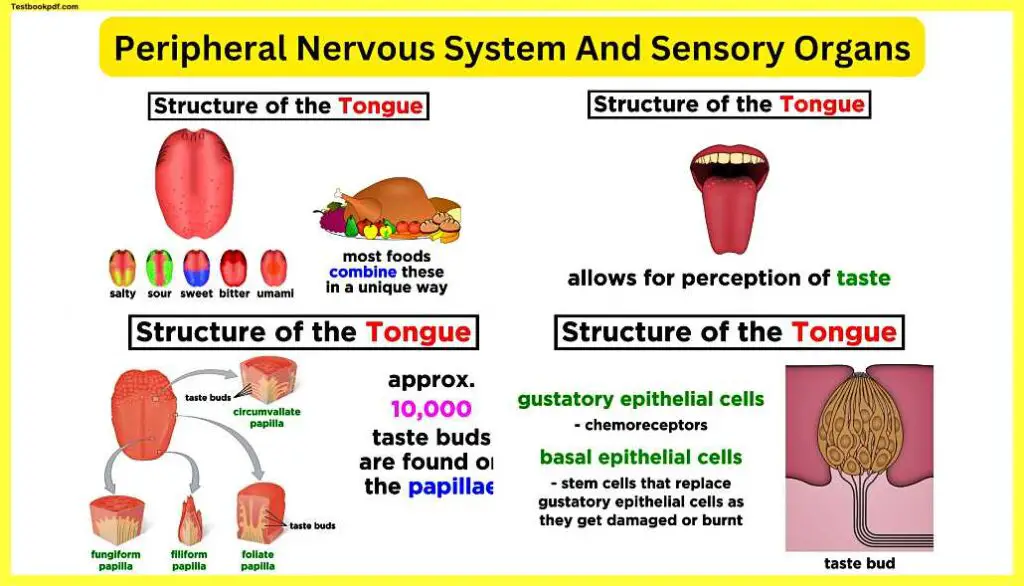
Moving on to the tongue, this is the main structure that allows for the perception of taste, as the majority of the ten thousand or so taste buds we possess are found on the papillae of the tongue. A taste bud is made of fifty to a hundred cells, which are a combination of gustatory epithelial and basal epithelial cells. The former of these are the ones that act as chemoreceptors, while the latter act as stem cells, replacing gustatory epithelial cells that get damaged or burnt. The five taste sensations that can be produced by these receptors are sweet, sour, salty, bitter, and umami, the last of which is not familiar to everyone, but it means savory, like a steak. Most foods produce some combination of these sensations to generate a unique perception.
Structure of the Ear
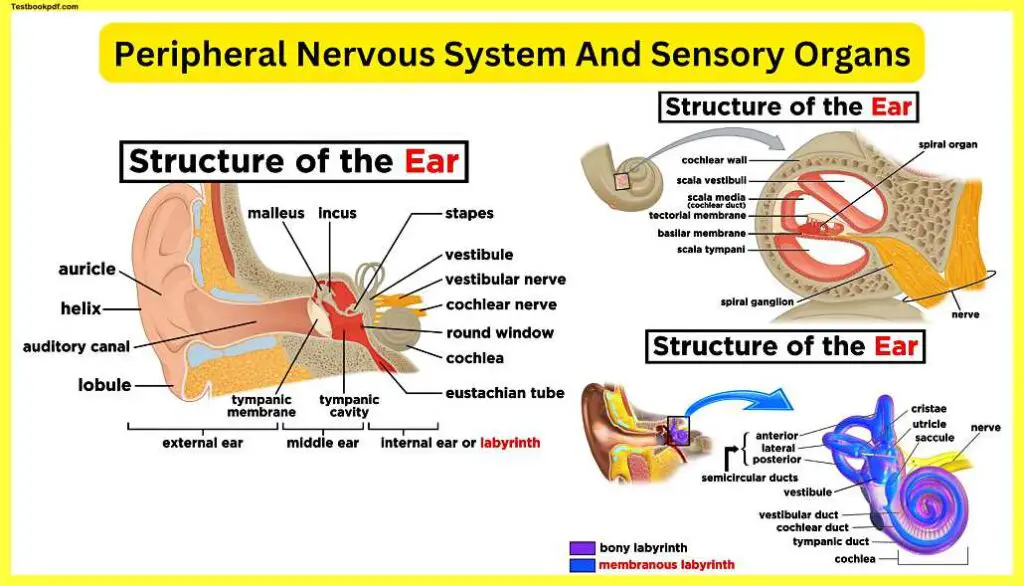
Lastly, let’s look at the ear. This is divided into an external ear, a middle ear, and an internal ear. The external ear contains familiar features, an auricle, a helix, and a lobule or earlobe. The auditory canal also begins here, which leads up to the tympanic membrane, or eardrum. Acoustic energy in the form of sound waves will reach the eardrum and cause it to vibrate, and this energy is transferred to the bones of the middle ear. This area is known as the tympanic cavity, which is spanned by three tiny bones called auditory ossicles.
These are the malleus, the incus, and the stapes. This leads to the internal ear, also known as the labyrinth, due to its complex structure. It is divided into the bony labyrinth and the membranous labyrinth. The main cavity in the bony labyrinth is the vestibule, which connects semicircular ducts within semicircular canals. Also extending from the vestibule is the cochlea, a snail-like spiral chamber that coils around the modiolus. The cavity of the cochlea is divided into three chambers or scalae. These are the scala vestibule, scala media, and scala tympani. And running through the center is the cochlear duct, which houses the spiral organ, which contains cochlear hair cells, the receptors for hearing. The ear also contains the vestibular apparatus, which helps us to maintain equilibrium or balance. That covers the sensory organs, so before we move forward, let’s just mention a few things about nerves.
Structure of a Nerve
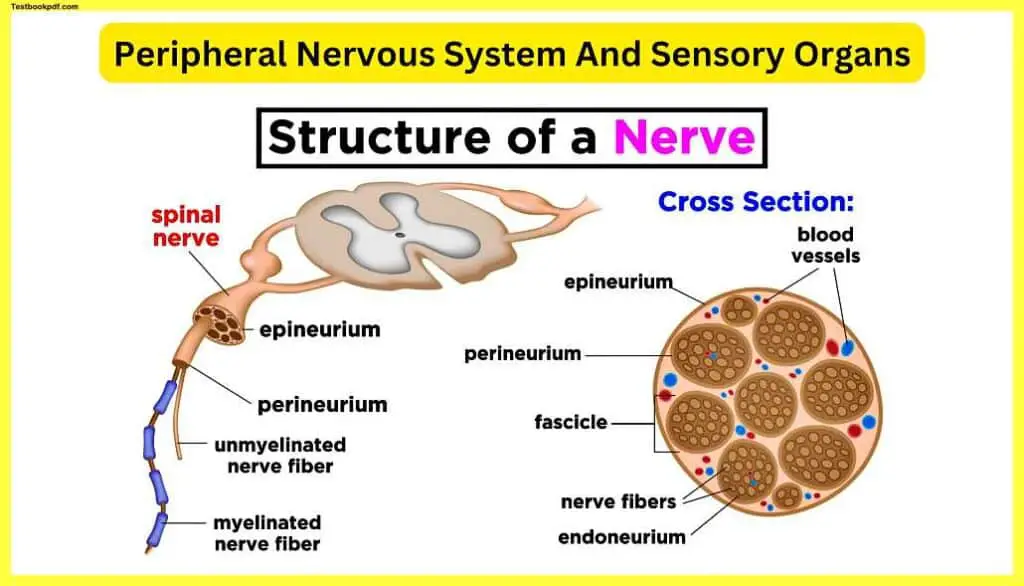
A nerve is a bundle of axons enclosed by connective tissue. These are the highways that allow for the transfer of information around the body. Each axon within a nerve is surrounded by some loose connective tissue called an endoneurium that also encloses the Schwann cells. Another layer of connective tissue called the perineurium binds groups of fibers together to form fascicles, and a tough fibrous sheath called the epineurium encloses all the fascicles to form the nerve.
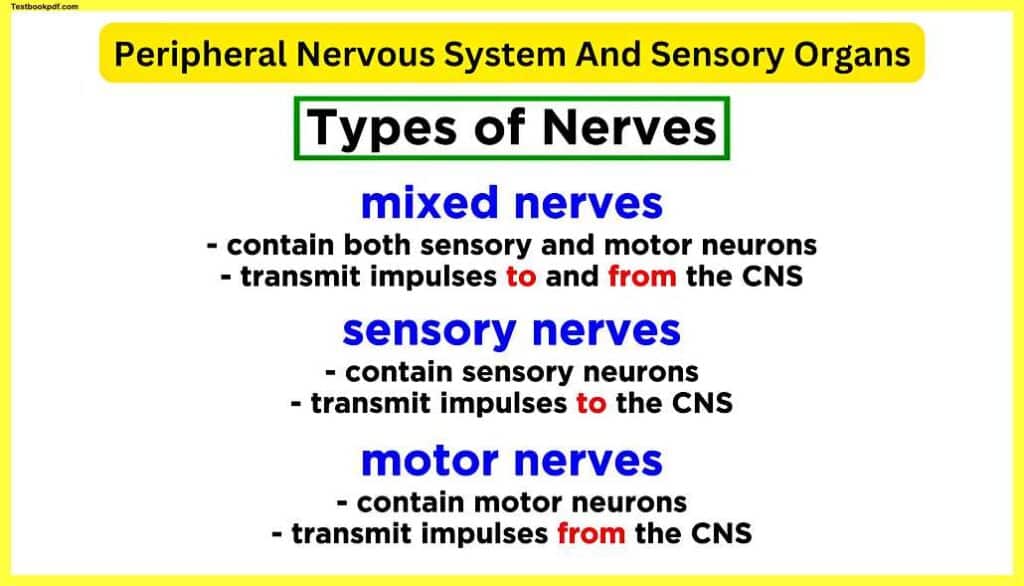
Apart from neurons, there are also blood vessels and lymphatic vessels in the nerve. Most nerves are mixed nerves that contain both sensory and motor neurons, and thus transmit impulses both to and from the central nervous system. But there are also sensory nerves, that transmit toward the central nervous system, and motor nerves, that transmit away from the central nervous system.
Cranial Nerves (12 pairs)
There are twelve pairs of cranial nerves that are associated with the brain, most of which are associated with the brain stem. These run between the brain and the sensory organs, and several other places.
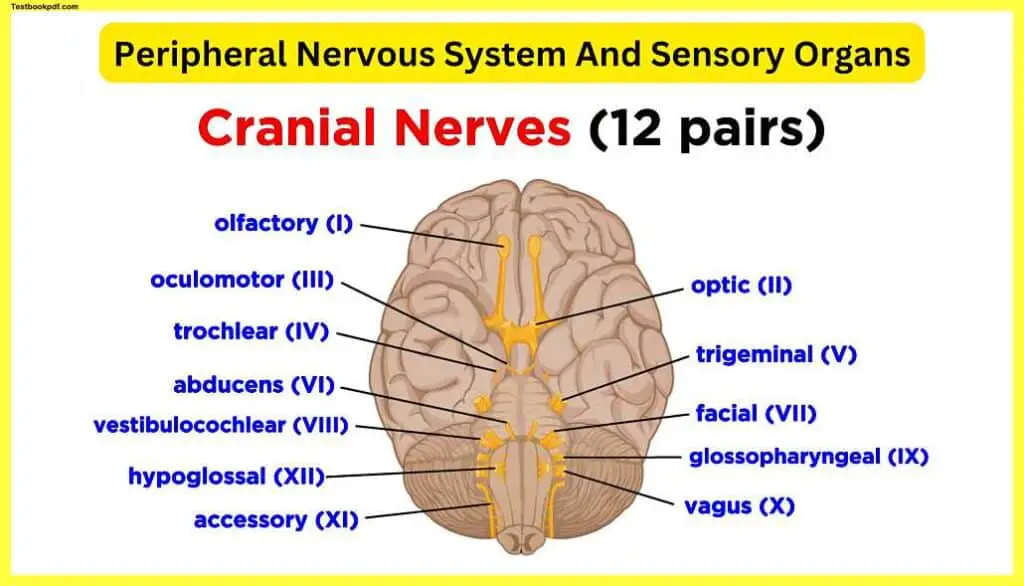
Then there are thirty-one pairs of spinal nerves that go from the spinal cord to most of the areas of the body, forming complicated networks called nerve plexuses, with each plexus innervating a particular region of the body. We will get more specific with these plexuses and nerves a bit later, as well as all of the reflexes they produce when we take a look at kinesiology, which is the study of body movement. For now, let’s move forward and wrap up our survey of the nervous system.
